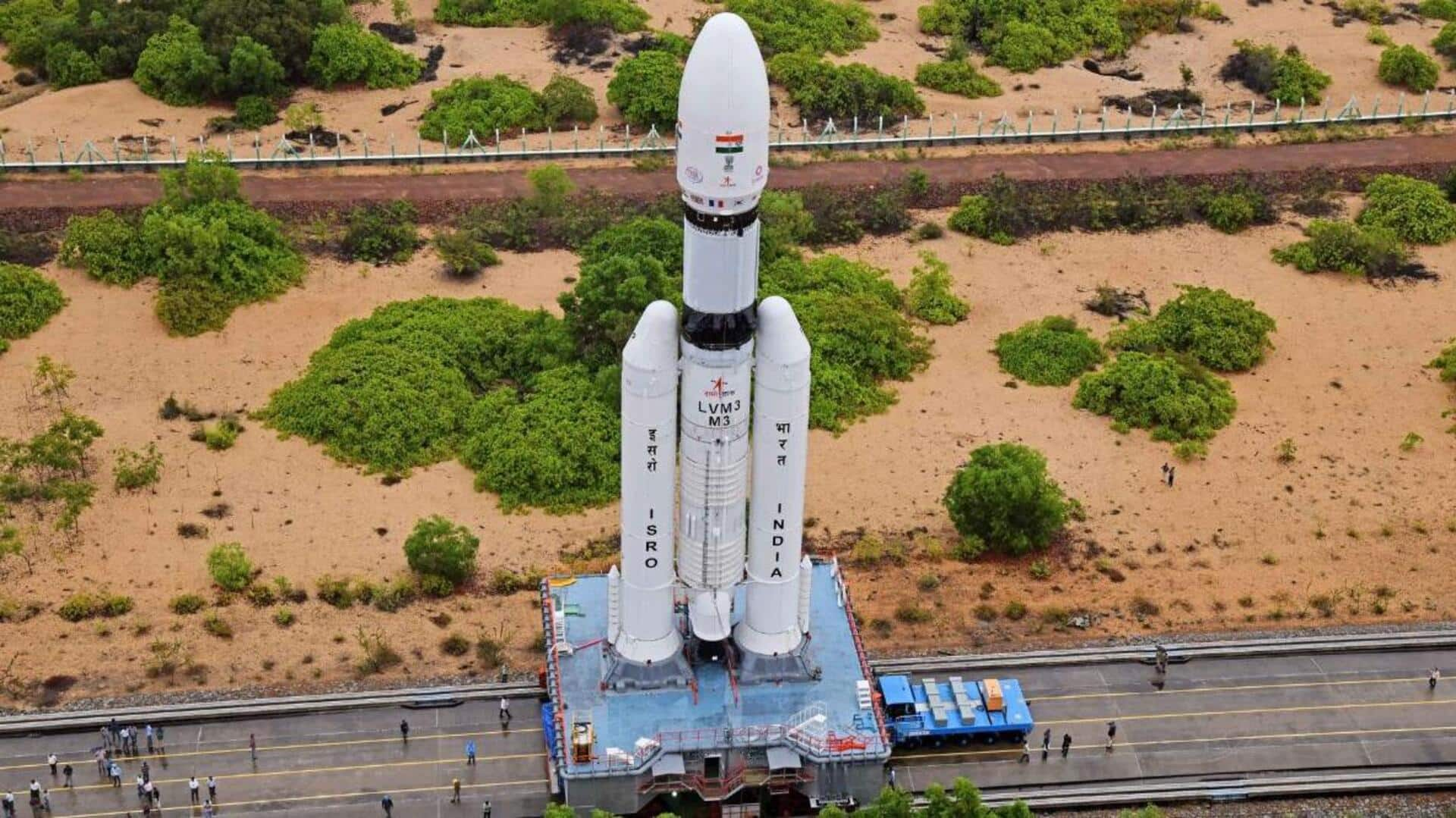
Key facts about LVM3, the rocket that will carry Chandrayaan-3
What's the story
ISRO's LVM3 (Launch Vehicle Mark 3) is currently the heaviest rocket available in the country. The three-stage space launch vehicle has a total lift-off weight of 6,40,000kg. LVM3 is now gearing up to fly Chandrayaan-3, India's third mission to the Moon, on July 14. Here we take a quick look at the key highlights of the powerful rocket.
Stages
The rocket has among the world's largest solid boosters
LVM3 comprises two solid strap-on motors (S200), one liquid core stage (L110), and a high-thrust cryogenic upper stage (C25). The S200 solid motor is among the largest solid boosters in the world, with a solid propellent capacity of 204,000kg, according to ISRO. These boosters are responsible for providing the required amount of thrust during launch.
Parts
The encapsulated assembly holds the key components together
LVM3 also has an equipment bay (EB) and an encapsulated assembly (EA). The latter holds the spacecraft, payload adaptor, and payload fairing. Standing vertical, the rocket's setup is as follows: at the top comes the EA with payload fairings, followed by the C25 stage, and at last is the L110 stage. The two S200 stages lie on either side of the aforementioned configuration.
Design
LVM3 stands 143-feet-tall
LVM3 measures approximately 143 feet in length with a roughly 16-foot-wide payload fairing segment. The tapered shape serves to protect the rocket from aerodynamic forces. The rocket can place GSATs—indigenously developed communication satellites— weighing up to 4,000kg into Geosynchronous Transfer Orbits (GTO). Its cryogenic stage allows it to ship heavy payloads of up to 8,000kg to the LEO at an altitude of 600km.
Naming
LVM3 was earlier called Geosynchronous Satellite Launch Vehicle (GSLV) Mark-3
LVM3 was earlier known as Geosynchronous Satellite Launch Vehicle (GSLV) Mark-3. In October last year, ISRO redesignated the rocket's name to LVM3. This was done to imply that the space vehicle could travel to a number of orbits including MEO (Medium Earth Orbit), LEO (Low Earth Orbit), and that it was not only limited to the GEO (Geosynchronous Earth Orbit).
Flights
LVM3 has made space six trips to date
LVM3 has flown on six missions so far. It made its debut in 2014 and flew the Chandrayaan-2 mission in 2019. Last year, the rocket launched its first commercial flight, the OneWeb India-1 mission. LVM3's second commercial launch, LVM3-M3/OneWeb India-2 mission happened this March when it flew 36 broadband satellites to the LEO. We will soon see the rocket take off again, with Chandrayaan-3.